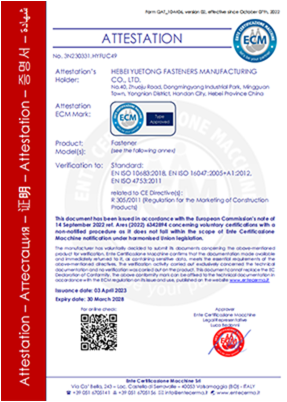11월 . 24, 2024 10:48 Back to list
Choosing the Right Screws for Metal Stud Installation and Construction Projects
What Screws Do I Use for Metal Studs?
When it comes to constructing walls, installing partitions, or even hanging fixtures, metal studs have become an increasingly popular choice in both commercial and residential settings. Unlike traditional wooden studs, metal studs offer several advantages, including fire resistance, lower weight, and straightness, leading to more accurate constructions. However, one of the critical aspects of working with metal studs is understanding which screws to use for maximum security and durability. In this article, we’ll explore the various types of screws suitable for metal studs, their benefits, and the best practices for installation.
Understanding Metal Studs
Metal studs are typically made from steel or galvanized steel and come in various gauges. The most common gauges are 20, 25, and 30, with a lower gauge number indicating a thicker, stronger stud. These metal frameworks are often used in commercial construction and can be an excellent choice for home renovation projects as well due to their longevity and resistance to warping and splitting.
Types of Screws for Metal Studs
When fastening materials to metal studs, it’s essential to use screws specifically designed for the purpose. Here are the most common types of screws used in conjunction with metal studs
1. Self-Tapping Screws These screws are engineered to create their own threads as they are driven into the metal. Self-tapping screws are available in various sizes and lengths and are especially effective for attaching drywall to metal studs. Look for screws with a fine thread, as they work well with thinner metal studs.
2. Sheet Metal Screws Sheet metal screws have a sharp point and a design that allows them to be driven easily into metal. They are often used for securing metal components to metal studs, making them ideal for attaching furring strips or blocking.
3. Drywall Screws While drywall screws are primarily designed for fastening drywall, they are effective in attaching drywall to metal studs as well. Ensure you use screws specifically labeled for metal applications, as these will have a sharper point and a finer thread to penetrate the metal more efficiently.
4. Toggle Bolts In situations where you need to attach heavy items to a wall made with metal studs, toggle bolts can provide extra support. They feature a mechanism that spreads the load over a larger area, making them ideal for hanging shelves or cabinets.
Benefits of Using the Right Screws
what screws do i use for metal studs

Choosing the right screws for metal studs is crucial for several reasons
- Strength and Stability Using the appropriate screws ensures a strong connection between the metal studs and any attached materials. This stability is especially important in load-bearing situations or in areas subjected to movement.
- Prevention of Damage Incorrect screws can lead to stripped threads or bent screws, which could damage both the fastener and the stud itself, necessitating costly repairs.
- Enhanced Safety Properly secured materials reduce the risk of collapse or detachment, ensuring safety in the constructed environment.
Installation Best Practices
1. Choose the Right Length Aim for screws that are long enough to pass through the drywall or paneling and have a secure grip in the metal stud, typically about ¾ to 1 inch longer than the thickness of the material being attached.
2. Pre-Drilling For thicker gauge studs or when working with harder materials, it may be helpful to pre-drill holes to avoid damaging the screws, especially if you are using self-tapping screws.
3. Use a Drill A power drill can save time and effort. Select a drill bit that is appropriate for the size of your screws and ensure you do not over-tighten, which can damage the stud.
4. Inspect Your Work After installation, make sure to check the stability and security of all attachments. Loose connections can lead to structural failures over time.
Conclusion
Using the correct screws for metal studs is essential in any construction project involving metal framing. By opting for self-tapping screws, sheet metal screws, drywall screws, or toggle bolts as appropriate, you can ensure a secure, durable, and safe structure. Always remember that proper installation techniques can further enhance the integrity of the build. Whether you’re a seasoned contractor or a DIY enthusiast, understanding these principles will contribute to successful results in your projects involving metal studs.


